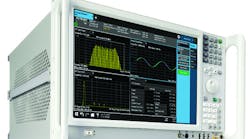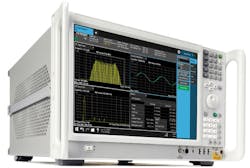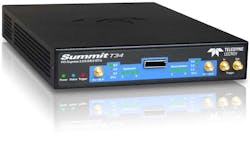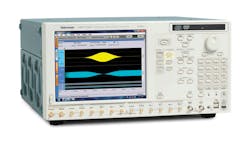This file type includes high resolution graphics and schematics when applicable.
Mixed-signal analysis continues to depend heavily on advanced software to simplify design tasks and handle the massive amounts of data generated by test equipment. Vendors continue to deliver high-performance equipment and then build on this hardware using new software products. Sometimes these software tools are free while others are available for an additional charge.
For example, Keysight Technologies’ N9040B UXA Signal Analyzer (Fig. 1) handles signals from 3 Hz to 26.5 GHz. Its full-band real-time spectrum analyzer capabilities have a 100% probability of intercepting signals with a duration as short as 3.84 µs.
The N9040B runs Microsoft Windows that supports the measurement and analysis applications. The standard suite includes the 89600 VSA software that is a set of tools for signal demodulation and vector signal analysis. Keysight’s PowerSuite provides one-button power measurements.
Keysight has added new software including the N9068C phase noise, N9069C noise figure, and N9063C analog modulation measurement applications. These are available for an additional cost. The N9063C application has features like one-button measurements to calculate metrics such as AM depth, FM deviation, total harmonic distortion (THD), and signal-to-noise-and-distortion ratio (SINAD). The N9068C phase-noise application provides one-touch measurements for analyzing phase noise in frequency domain (log plot) and time domain (spot frequency).
Teledyne LeCroy’s Summit T34 Protocol Analyzer (Fig. 2) can tackle x1, x2, and x4 PCI Express 3.0 lanes. It can handle up to 64 Gbytes of analysis storage, but the Summit T34 is not limited to the basic PCIe protocols—which is handy because protocols like NVMe and SATA Express are built on PCIe.
The new NVMe software takes advantage of the long trace recordings so the new NVMe Queue Analysis can operate on several hours of data. This includes the ability to measure the NVMe queue distribution over a sustained time period. The software also provides NVMe/SATA Express SSD performance and analysis reports.
Tektronix’s DPO7000 Oscilloscope and the AWG7000 Arbitrary Waveform Generator (Fig. 3) can host Tektronix’s HDMXpress. HDMXpress supports HDMI 2.0 receiver testing. It supports HDMI test pattern generation, auto-calibration, and margin testing. This can eliminate the need for manual pattern creation. The tools can be used to automate compliance and validation testing.
In many cases, the software costs may exceed that of the hardware used to generate signals or record information. The advantage is the extensibility of these systems and the ability to handle new protocols or requirements.





